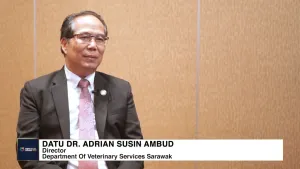Fragmented rules raise costs in ASEAN healthcare partnerships
ASEAN’s per-person healthcare cost averages US$630.
As ASEAN governments grapple with rising healthcare costs, calls to strengthen public-private partnerships (PPPs) are growing louder. But without coordinated regulation and a shift toward preventive care, progress could stall.
According to Chris Humphrey, Executive Director of the EU-ASEAN Business Council, the region needs to rethink its approach to healthcare delivery. “We need to have a complete review of how ASEAN governments are approaching healthcare in general,” he said. “We need to move away from a system which is basically based on curative care… to a system that is more focused on prevention.”
Humphrey noted that shifting toward preventive care would reduce reliance on primary healthcare services and ease the financial burden on public systems. He also emphasised the role of European healthcare companies in supporting governments across ASEAN.
“There’s a number of areas there on the PPP side of life, where businesses, European healthcare businesses, are willing to help and want to help with governments,” he said.
However, policy missteps are undermining the effectiveness of PPPs. Humphrey identified fragmented regulatory environments and local content requirements as key obstacles. “A lack of harmonisation of regulation across ASEAN member states is an issue,” he said. “If you're working across the entire region, you want to have a predictable regulatory regime… Otherwise, you're having to tailor approaches to each individual market, and that becomes very, very costly.”
He also warned that protectionist policies—while often politically popular—may not suit the needs of advanced medical manufacturing and innovation. “We do have a prioritisation of local content. And while we feel that is understandable in some circumstances, it doesn't actually help,” he said. “We’re talking about healthcare here, the development of diagnostic systems, the development of new medicines… often that production needs to be done in very specialized circumstances.”
Looking ahead, Humphrey stressed the importance of coordinated crisis response frameworks and investments in digital health tools to prepare for future health emergencies.
Prevention and self-care, including telemedicine, also need more attention. “Prevention is the best form of defense,” said Humphrey. “European firms working in the self-care space have a lot of ideas for improving things like health literacy… We can do a lot more on developing things like telemedicine.”













